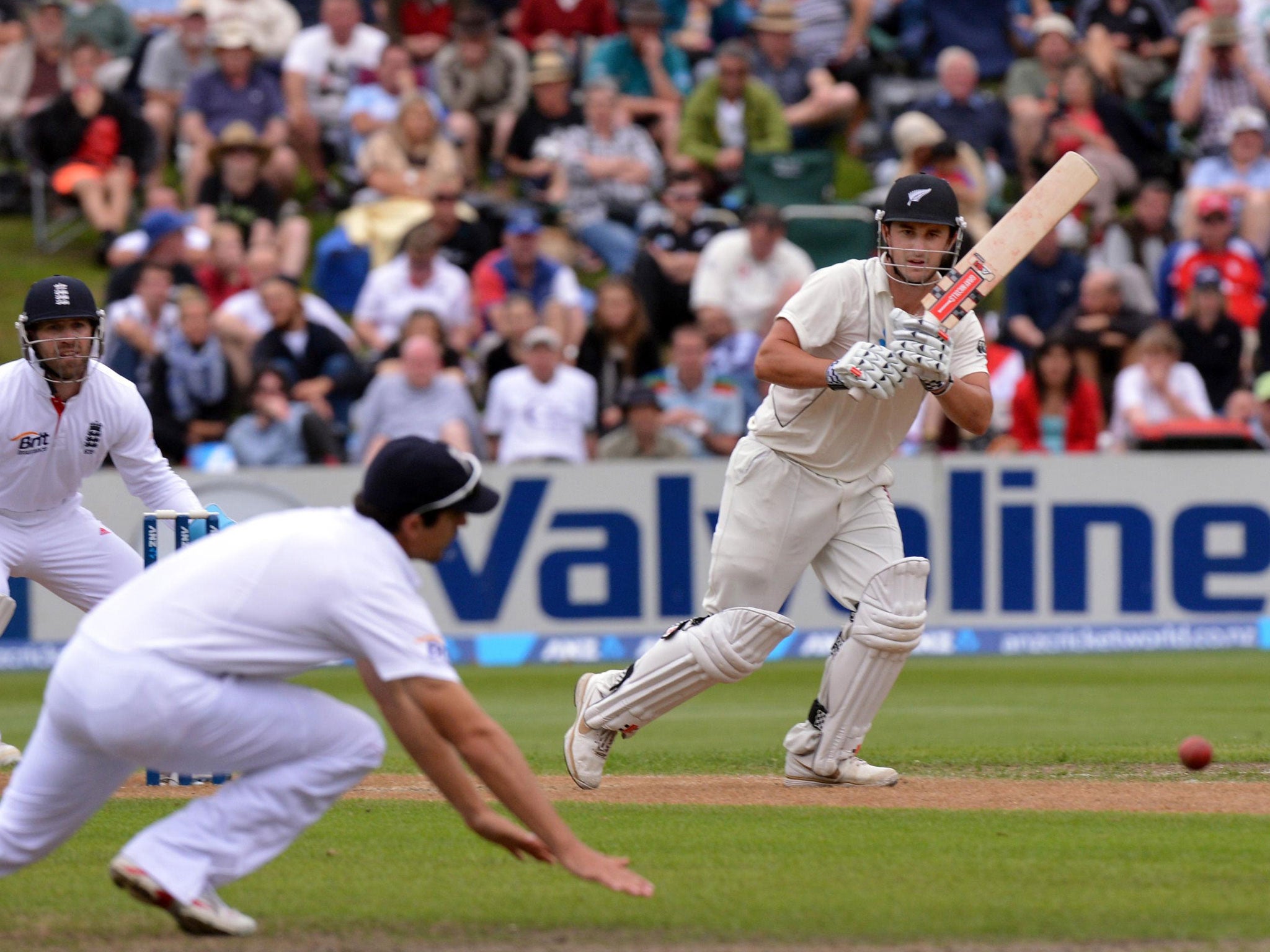New Zealand v England: Hamish Rutherford piles on agony in first Test

England’s unforeseen misery multiplied in the First Test today. Having failed catastrophically with the bat, they were severely undermined with the ball as New Zealand built an imposing first innings lead of 235.
The tourists’ unlikely nemesis in chief on a chilly, rain spattered third day at University Oval was the 22-year-old debutant, Hamish Rutherford, who made a marvellously paced if not wholly faultless 171.
It was the sixth-highest maiden Test innings, taking 217 balls and containing 22 fours and three sixes. Rutherford offered two catching opportunities, one of which should certainly have been snaffled, and two others which came into the realms of near misses.
Had Jimmy Anderson clung on to a return drive which was drilled past him at catchable height when Rutherford was on 109 it might have removed one or both of his hands into the bargain. Instead it flew by for four.
Otherwise, Rutherford’s timing and assurance were commanding in an innings lasting nearly six hours. His first appearance in a Test a match was totally at odds with that of his father, Ken, who made a pair on his debut 27 years ago and went on to make five ducks in his first 10 innings.
England did not bowl as lamentably as they batted – that would have been an order as steep as the local landmark, Baldwin Street, the highest residential street in the world. But they never came to terms with the benign surface or the pragmatic way in which the Kiwis approached their batting.
Only a flurry of wickets with the second new ball arrested New Zealand’s development but even then they were conscious of the need to keep the board ticking over at a lively rate. When rain eventually forced the teams off 20 minutes after tea, New Zealand were on 402 for 7, scoring at almost four runs an over.
Whether they are bowled out or declare, their lead will be substantial and England will have to bat around three times longer than they did in the first innings to save the match.
So little has gone right for them so far that it would be easy to mistake which is the second and which the eighth ranked Test team in the world.
England managed finally to break the first wicket partnership in the ninth over of the morning. Peter Fulton edged a half-cocked drive low to Matt Prior behind the wicket, but not before having made his first Test half century for seven years. His partnership of 158 with Rutherford was New Zealand’s highest for the first wicket against England in New Zealand since 1930.
If the wicket might have persuaded Rutherford to regroup awhile he spurned the idea. He continued to be brutal on anything given width and the shots with which he reached 100 and 150 were sublime. The first milestone came with a sizzling extra cover drive, the second with a straight six.
In one over from Anderson, who was comfortably England’s best bowler, he hit three fours - on the up through cover, backward of square, his favourite area, and past wide mid-wicket. Before lunch England took a second wicket when Kane Williamson misread a straight one from Monty Panesar which sneaked through his optimistic cut shot and bowled him.
By now, however, the second new ball was crucial to any aspirations England had of preventing the Kiwis galloping across the hills and far away. To their enormous relief it worked instantly.
Somehow, Rutherford contrived to clip a leg stump ball from Anderson in the air to square leg. He went off to a standing ovation and with one of cricket’s more arcane records: his total was the highest against England by a player in his first Test innings, beating Chares Bannerman’s 165 for Australia in the first Test of all in 1887.
Anderson had his tail up now and he cannot have been best pleased when Joe Root put down a regulation slip catch at third slip, offered by Dean Brownlie. It might have explained Anderson’s grumpy reaction when Ross Taylor, who was looking in extremely good order, nudged an outswinger to Jonathan Trott at second slip.
He followed by bowling a static Brownlie off an inside edge and when Broad took his first Test wicket of the winter, England had four wickets in 13 overs. By the time Broad struck again six overs late another 44 runs had been added as Brendon McCullum and Tim Southee meted out some measured punishment. The rain saved England – if only for the day.
Subscribe to Independent Premium to bookmark this article
Want to bookmark your favourite articles and stories to read or reference later? Start your Independent Premium subscription today.

Join our commenting forum
Join thought-provoking conversations, follow other Independent readers and see their replies